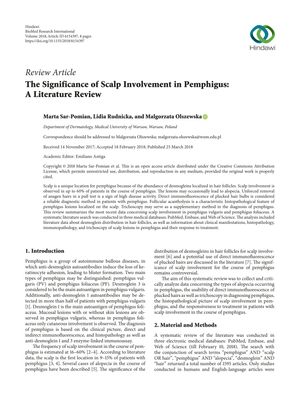TLDR Scalp involvement is common in pemphigus and can lead to hair loss, with the severity of scalp lesions linked to overall disease severity.
The document is a literature review that highlights the importance of scalp involvement in pemphigus, an autoimmune disease that causes blistering and can lead to alopecia in 16-60% of cases. The review, which analyzed 77 articles from databases like PubMed, Embase, and Web of Science, discusses clinical manifestations, histopathology, immunopathology, trichoscopy, and treatment response of scalp lesions in pemphigus vulgaris and foliaceus. It reports that scalp lesions typically present as erosions and crusted or scaly plaques, and sometimes result in alopecia, with scarring alopecia being less common. The review also notes that the Pemphigus Disease Area Index (PDAI) is used to assess scalp involvement and that there is a correlation between anagen hair loss and disease severity. A study within the review included 32 patients and found that follicular acantholysis occurred in 70.6% of pemphigus vulgaris cases and 80.0% of pemphigus foliaceus cases, with varying depths of acantholysis. Over 80% of patients showed miniaturization of sebaceous glands. Direct immunofluorescence (DIF) of plucked hair had a 91% sensitivity in detecting pemphigus vulgaris, and trichoscopy revealed specific features in pemphigus scalp lesions. The review concludes that the scalp is commonly affected in pemphigus due to the high concentration of pemphigus antigens in hair follicles and acknowledges the need for further study on treatment response in severe scalp involvement.
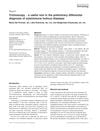 13 citations
,
August 2017 in “International Journal of Dermatology”
13 citations
,
August 2017 in “International Journal of Dermatology” Trichoscopy helps quickly identify autoimmune diseases on the scalp but should be used with other standard tests.
7 citations
,
July 2017 in “The Journal of Dermatology” Hair loss can occur when pemphigus foliaceus changes to pemphigus vulgaris.
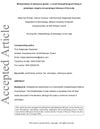 9 citations
,
June 2017 in “Journal of Cutaneous Pathology”
9 citations
,
June 2017 in “Journal of Cutaneous Pathology” People with pemphigus vulgaris and pemphigus foliaceus often have smaller sebaceous glands on their scalp.
8 citations
,
July 2015 in “International Journal of Dermatology” A new DSG4 gene mutation causes hair defects in a young girl.
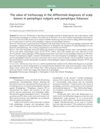 23 citations
,
November 2014 in “Anais Brasileiros de Dermatologia”
23 citations
,
November 2014 in “Anais Brasileiros de Dermatologia” Trichoscopy helps tell apart scalp lesions in pemphigus vulgaris and pemphigus foliaceus and is useful for choosing biopsy locations.
10 citations
,
October 2014 in “Journal of the European Academy of Dermatology and Venereology” Pemphigus vegetans can appear on the scalp and is rare.
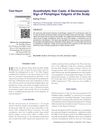 15 citations
,
January 2012 in “International Journal of Trichology”
15 citations
,
January 2012 in “International Journal of Trichology” Hair casts on the scalp may be a sign of ongoing pemphigus vulgaris and could suggest a need to adjust treatment.
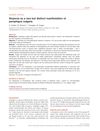 23 citations
,
November 2011 in “Journal of the European Academy of Dermatology and Venereology”
23 citations
,
November 2011 in “Journal of the European Academy of Dermatology and Venereology” Hair loss is a rare but recognized symptom of pemphigus vulgaris, with patients usually regrowing hair after treatment.
81 citations
,
March 2006 in “Journal of Investigative Dermatology” Mutations in the DSG4 gene cause specific hair and scalp issues.
28 citations
,
May 1998 in “Journal of the American Academy of Dermatology” Scalp inflammation can cause multiple hairs to grow from one follicle.
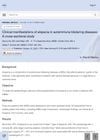 October 2022 in “JAAD international”
October 2022 in “JAAD international” Most patients with autoimmune blistering diseases experienced some hair loss, which may be underreported and linked to disease severity.
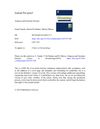 7 citations
,
July 2019 in “Clinics in Dermatology”
7 citations
,
July 2019 in “Clinics in Dermatology” Hair loss can indicate or worsen with systemic diseases, and treating the underlying condition is important.
 9 citations
,
December 2020 in “British Journal of Dermatology”
9 citations
,
December 2020 in “British Journal of Dermatology” Low-dose oral minoxidil increases hair thickness and length in children with a hair disorder called Loose Anagen Hair Syndrome.
 23 citations
,
November 2014 in “Anais Brasileiros de Dermatologia”
23 citations
,
November 2014 in “Anais Brasileiros de Dermatologia” Trichoscopy helps tell apart scalp lesions in pemphigus vulgaris and pemphigus foliaceus and is useful for choosing biopsy locations.
 January 2022 in “Dermatology Review”
January 2022 in “Dermatology Review” Higher IL-31 levels are linked to worse itching in chronic kidney disease patients.
